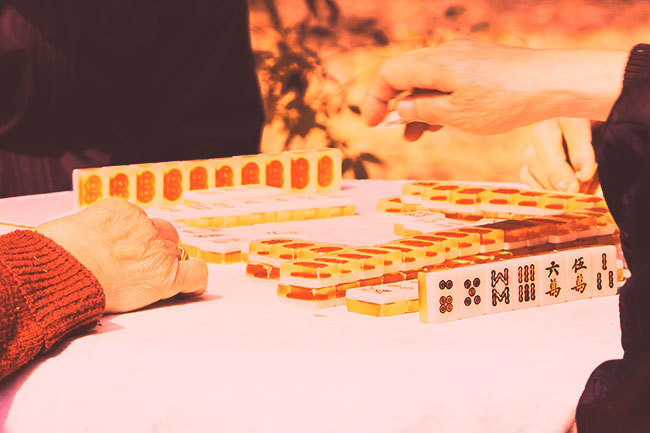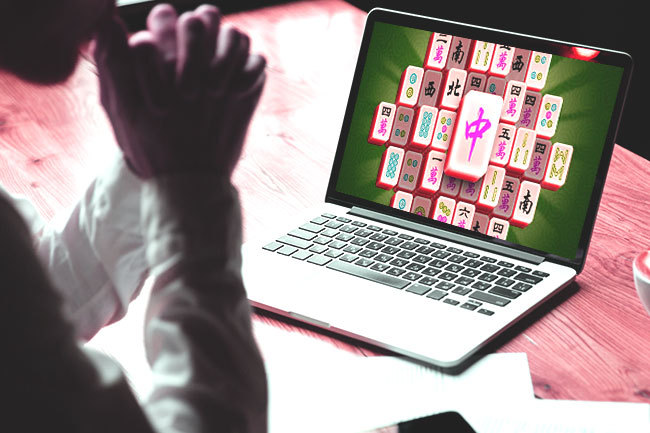The game of Mahjong is among the most exotic gaming experiences one could have, as it brings you closer to a simpler time. It takes a while for the game to reach its end, so it requires a peaceful afternoon or an entire evening of friendly talks above the intricate tiles piled in the middle of the gaming table. It also offers an opportunity for the players to win a payout.
Fusing skill and chance is essential for the traditional game of Mahjong offering tons of chances for an individual to make the right choice and eventually become the winner. However, there are several strategies that should be kept in mind when you first begin exploring everything this game has in store.
Initial Preparation

The most important element of the game is staying present and carefully observing everything happening on the table or the flat surface where the game is taking place. The intricately drawn Mahjong tiles are constantly moving to and fro the pile in the center and the walls players have built in front of themselves. For the experienced players, the game happens at a fast pace and they do not hesitate.
However, this is not the case with a beginner Mahjong aficionado that has recently discovered the wide variety of tiles and points associated with them. The first step when learning about Mahjong is to familiarize yourself with the various drawings on the tiles and their significance, as well as the ways they could be combined for a better final result. The additional honor and bonus tiles might take more time.
They are an essential part of the game, as they could enhance your points. Working on them is recommended for everyone interested in becoming a Mahjong expert in time. One of the ways in which one could overcome the initial fear of playing is by practicing without the point system, at least for the first several times.
Planning Ahead of Time

Players should bear in mind that they should be the only one knowing what the tiles in their hand look like. Arrange the tiles in front of you in the most adequate manner that works for you, but avoid placing them in groups that could be easily spotted and recognized by the rest of the players on the table. Those tiles are not easy to be hidden, especially if it’s an experienced player you play against.
Another mandatory step before even commencing one’s game is the plan for action in your head. Planning your first and the one after that could paint an overall picture in your head, making the entire game much more structured. This is mandatory because of the pace of the game that involves quick changes and the exchange of tiles that could appear erratic to the untrained eye.
Drawing different tiles could end up scrapping your initial plan for action and an experienced Mahjong player would be unfazed by the swift change of direction. At the end of the day, the game is a dynamic one as the tiles set the tone for the entire game. Another thing to take into account is the discard pile with its myriad of options luring you. Taking a tile from that pile is not always the best option.
Good Memory is Crucial

Such a move requires the revealing of your meld, which then makes it easier for your rivals to predict your next move. Moreover, the discard pile could also reveal more about the remaining four players, as it could tell you more about the tiles they are in need of. Knowing this, you can make an informed decision as to what you would discard with the final goal being not helping them progress.
Mahjong players are renowned for their good memory, as there are so many variations of the tiles. Many of them have slight differences that eventually make the game more exciting. There is a non-gambling Mahjong game that requires you to pick similar tiles until there are no tiles left on the table. When it comes to the gambling variety of this game, a player trains their memory through the diverse tiles present and the points associated with them.
The tile combinations play a central part in the regular Mahjong game especially when it comes to the calculation of points at the end of the game. They determine the eventual winner, as well as the payout they are eligible for. Some players might resort to a special list of points and tiles they could refer to any time they are in doubt about what they should do. This could make memorization easier.
Special Approaches
It should be taken into account that in time one could find this constant looking away from the action time-consuming. At the end of the day, a Mahjong player should strive to have quick reactions to everything happening before their eyes and not hesitate and look through a piece of paper. There is a simple strategy that could bring a better understanding of the process of a standard Mahjong game. It involves a simple three-letter abbreviation.
The D-A-D approach marks some of the milestone moments of a typical Mahjong game and it places it on the timeline. The initial stages of the game are dedicated to the development of the game, which is why this phase is associated with the first D. Once this stage is done, it is time for the attack. This is a time for rapid action, flying tiles all over the table, as well as putting your strategy to good work.
Testing it in real life could actually give you a good lesson for future games. The last portion of the gaming action is dedicated to defense, hence the last D of the abbreviation. A skilled Mahjong player is protecting everything achieved until the very last minute of the game. One of the ways to do so is via discarding tiles in a careful manner, preventing other payers from benefitting and eventually winning the game.









